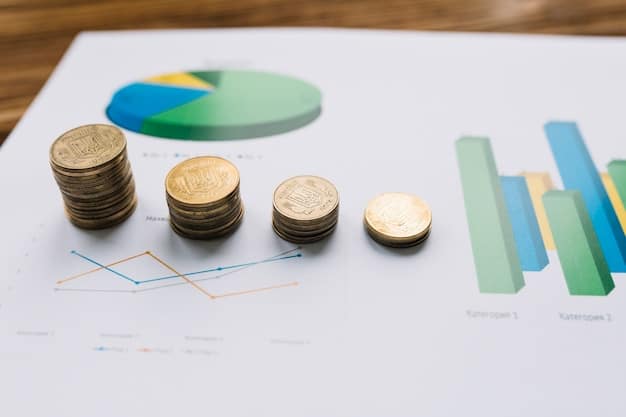
Investing is not just about going with your gut—it is about really getting to know the companies you are putting your money into. To do this well, you need to get comfortable with the company’s financial statements and ratios – the key to unlocking what is really going on beneath all those numbers.
Financial statement analysis is crucial for understanding a company’s financial health and performance.
Let us turn this complex data into smart, profitable decisions. Here are some key financial ratios you must know as an investor.
1. Price-to-Earnings Ratio (P/E)
Let’s kick off with one of the most commonly discussed ratios in stock analysis: the Price-to-Earnings Ratio, or P/E. This ratio measures how much investors are willing to pay per dollar of earnings.
A higher P/E ratio could mean that the company’s stock is overvalued, or investors are expecting high growth rates in the future. On the other hand, a lower P/E ratio might indicate that the stock is undervalued or that the company is possibly facing difficulties.
To calculate P/E, you simply divide the market value per share by the earnings per share (EPS).
P/E Ratio= Market Value Per Share/ Earnings Per Share (EPS)
For example, if a company’s stock is trading at $100 and the EPS is $5, the P/E ratio would be 20. This means investors are paying $20 for every $1 of earnings.

2. Earnings Per Share (EPS) in Financial Statements
Speaking of EPS, it is a direct reflection of a company’s profitability and is closely monitored by financial analyst and investors. It is calculated by dividing the company’s profit by the total number of outstanding shares.
EPS=Net Income/ No. of Shares Outstanding
For instance, if a company earns $10 million in gross profit, and has 1 million shares outstanding, its EPS would be $10.
EPS is a powerful tool that boils down a company’s profitability to a simple per-share basis, making it easier to compare with others. A higher EPS indicates greater value because investors will pay more for a company’s shares if they are earning more money on each share. Companies often report both GAAP (Generally Accepted Accounting Principles) EPS and non-GAAP EPS, which excludes one-time gains and costs, providing a clearer picture of ongoing profitability. EPS is also a key component of profitability ratios, such as profit margin, return on assets, return on equity, and gross margin ratios, which convey how well a company can generate profits from its operations.
3. Debt-to-Equity Ratio (D/E)
Switching gears to a ratio that speaks volumes about risk—the Debt-to-Equity Ratio (D/E). This ratio compares a company’s total liabilities to its shareholder equity. It tells us how much a company is relying on debt to finance its assets. A higher D/E ratio might indicate that a company is funding its growth with debt, which could be risky during economic downturns.
Debt to Equity Ratio= Total Debt/ / Total Equity
To get the D/E ratio, divide the company’s total liabilities by its total shareholder equity. If a company has $200 million in liabilities and $100 million in equity, its D/E ratio is 2.0, suggesting a high level of debt. Additionally, the debt service coverage ratio is crucial for evaluating a company’s ability to pay its debt obligations, providing further insight into financial stability.
4. Return on Equity (ROE) in Profitability Ratios
Return on Equity (ROE) is another stellar financial ratio for evaluating how efficiently a company uses its shareholders’ equity to generate profit.
It’s calculated by dividing the company’s net income by its shareholders’ equity.
ROE = Net Income / Shareholders’ Equity
Essentially, ROE shows the bang for the buck that shareholders are getting from their investment.
For example, if a company has a net income of $10 million and shareholders’ equity of $50 million, its ROE would be 20%. This would mean that for every dollar of shareholders’ equity, the company has operating income and generates 20 cents in profit.
5. Current Ratio in Liquidity Ratios
Now, let’s touch on the Current Ratio—a quick test of a company’s ability to pay off its short-term liabilities with its short-term assets. The Current Ratio measures this ability by dividing the company’s current assets by its current liabilities. A current ratio greater than one indicates that the a company’s assets now can cover its short-term obligations, which is a good sign for investors.
6. Price-to-Book Ratio (P/B)
The Price-to-Book Ratio (P/B) is another key financial ratio in our arsenal. This ratio compares a company’s market value to its book value. Essentially, it shows how much investors are willing to pay for each dollar of net assets.
A lower P/B might mean the stock is undervalued and vice versa.
To calculate the P/B ratio, divide the market value per share by the book value per share. If a stock trades at $100 and the book value per share is $50, the P/B ratio would be 2.0.
7. Quick Ratio
Similar to the Current Ratio but a bit more stringent, the Quick Ratio is one of the key liquidity ratios that measure a company’s ability to meet its short-term obligations with its most liquid assets. The formula excludes inventory from current assets, as it’s not as readily convertible to cash. It only focuses on cash, marketable securities, and receivables.
A quick ratio higher than one is typically a good indicator of financial health.
8. Debt-to-Capital Ratio
This ratio helps investors understand a company’s financial leverage and risk level by comparing its total debt to its total capital. It’s particularly insightful for assessing how a company’s liquidity and business can withstand economic downturns based on its debt load.
Debt to Capital Ratio=Total Debt/ Total Equity + Total Debt
9. Interest Coverage Ratio (ICR) and Debt Service Coverage Ratio
ICR tells us about a company’s ability to cover its interest obligations with its earnings. It is crucial for evaluating the sustainability of a company’s debt, especially in fluctuating economic conditions.
10. Enterprise Value to EBIT
This advanced valuation metric goes beyond simple P/E to include debt in its assessment, offering a more comprehensive view of a company’s worth relative to its operating earnings.
11. Operating Margin
This ratio reflects the efficiency of a company’s core business operations, independent of factors like tax and financing structure.
It is calculated by dividing operating profit by total revenues, providing insight into how much profit each dollar of net sales generates.
The Big Picture
While these financial ratios are powerful tools, they are just part of the broader financial analysis landscape. Understanding a company’s balance sheet and financial ratios is vital, but so is the context in which it operates. Research the management team, the company’s market position, and its competitive environment. Sometimes, the most critical factors determining a company’s success are not easily quantifiable.
Using financial ratios effectively requires a balance of technical knowledge and practical insight. As you refine your stock analysis skills, keep exploring beyond the numbers. Engage with the narratives of different businesses, stay curious, and always consider the broader economic context. Remember, successful investing is not just about picking stocks but building a portfolio that withstands the test of time and market fluctuations.
Financial statements, such as the balance sheet, income statement, and cash flow statement, are crucial in evaluating a company’s full financial position, health and performance.




